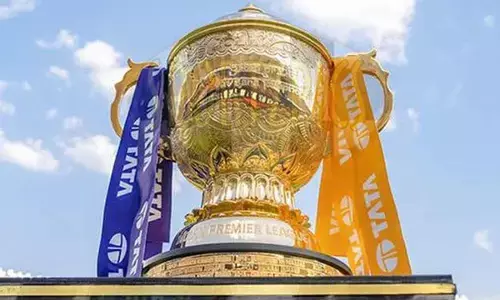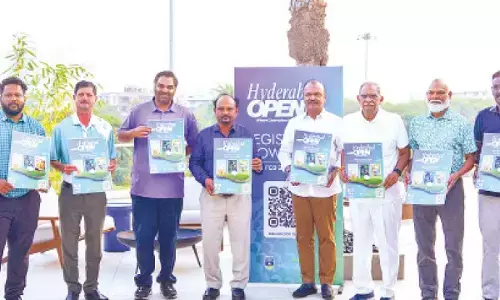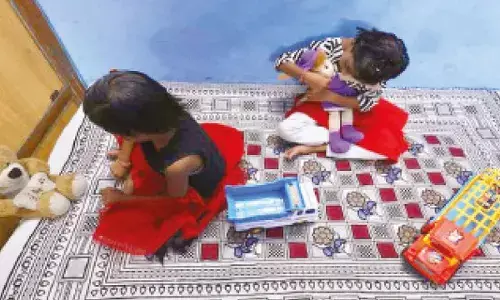How to kick-start growth

For a Prime Minister who was elected on the card of Achche Din, Narendra Modi’s hour of reckoning is close at hand. Politically, he is strong with the opposition weak and fragmented, but the economy is sinking. The growth rate is down to below 5.7 per cent in the first quarter of the financial year (April- June) and at that level is equal to that of Pakistan and less than that of Bangladesh that i
For a Prime Minister who was elected on the card of Achche Din, Narendra Modi’s hour of reckoning is close at hand. Politically, he is strong with the opposition weak and fragmented, but the economy is sinking. The growth rate is down to below 5.7 per cent in the first quarter of the financial year (April- June) and at that level is equal to that of Pakistan and less than that of Bangladesh that is growing more than 7 per cent.
The growth rate in the last quarter of the previous financial year was 6.1 per cent and, in fact, growth has been falling for the last seven successive quarters. The index of industrial production grew by 1.2 per cent in August, compared to 4.5 per cent a year ago. Agricultural growth fell to 2 per cent in the first quarter of the financial year compared to 4.9 per cent recorded in the last year.
The other parameters of the economy are also none too bright. Annual export growth is now at only 3 per cent and how low this is can be made out from the fact that in the years 2003-08 exports growth was around 17.8 per cent. About 20 per cent of India’s GDP is contributed by exports, so a sluggish growth has deadly implications. Investment is down and the investment to GDP ratio which was 35 per cent for 8 years has now fallen to 30 per cent.
The reasons for the sinking economy are not too difficult to discover: the demonetisation on November 8 last year that took away 86 per cent of all cash in the economy at one stroke, knocked the bottom off the economy. It disrupted supply chains – both formal and informal – that run the economy even as it choked off consumer demand.
When consumer demand stated reviving, it began to be met with imports. Analysts have pointed out that after October 2016 imports have been rising. These are imports other than of oil, gold and silver (whose demand is mainly met through imports).
The inescapable conclusion is that they are rising because the backbone of domestic production has been broken and not enough can be produced at home to meet this demand. Although hardcore figures are not yet available, the breakdown in the production facilities must have led to cessation of many jobs and closure of many small businesses.
Even before the full effect of demonetisation could be played out, the government introduced the Goods and Services Tax (GST).
Though a unified tax system leads to a common market across the country and in the long run leads to a boost in the economy, the global experience with GST is a slowdown and increase in prices in the first year after it is introduced. Thus it is not surprising that GST has led to disruptions in the economy slowing down the production process. It has also led to shrinking of consumer demand because of improper classification of products leading to many goods being classified in a higher tax bracket.
In this scenario, one of the only parameters on track is the target for fiscal deficit. The target of 3.2 per cent in 2017-18 (which will be down from 3.5 per cent in 2016-17 and from 4.1 per cent in 2014-15) seems quite feasible.
Consequently inflation is also in check. Presently ruling at 2.1 per cent (this is the figure for August 2017), inflation (or the rate of increase in prices) is down from 4.9 per cent in 2016-17 and 5.9 per cent in 2014-15. It was as high as 10.2 per cent in 2011-12. Foreign direct investment is also rising and India’s foreign exchange reserves are at $ 400 billion – a record high. But there are no jobs for the millions who join the workforce every year (1 million a month) – and as said above the growth rate has tapered.
So what is the solution? Realising that he has been caught in a bind, Prime Minister Narendra Modi has appointed an Economic Advisory Council (EAC) headed by eminent economist and member of NITI Aayog, Bibek Debroy. There used to be an EAC in the Manmohan era but was disbanded the moment Modi came to power. What the panel advises remains to be seen, but from the point of view of a layman, the government must give up its newly found obsession with controlling fiscal deficit and instead step up government expenditures.
The government in India has been for long been the major player in the economy and the old wisdom is that a boost in government expenditures has a cascading effect across the economy. This is a classical Keynesian solution first recommended during the Great global recession of the 1930s.
Stepping up government expenditure will especially make sense because many departments have been chary in spending their allocated budgets. As an example, the Railways have an allocated budget of Rs 55,000 crore for 2017-18, but in the first quarter have been able to spend barely 18 per cent of the budget. This has to be increased rapidly. Similar acceleration in infrastructure investment should be spurred across sectors.
Secondly, the government must immediately reduce prices of petrol and diesel prices for consumers. The domestic prices of fuel are continually rising although the international prices of fuel are considerably falling – in fact from $ 102 per barrel in 2014, it has fallen to less than $ 50 per barrel presently. About 78 per cent of the oil used in India is imported so the right thing to do will be to pass on the benefit to consumer.
But the government has not done so; instead, it has been pocketing it for filling its coffers (and thus keeping the fiscal deficit under check). In fact, realising that the demand for fuel is inelastic (which means that an increase in price is not accompanied by commensurate reduction in demand), the central government has raked in more moolah by revising upwards excise duties on petroleum products multiple times. State governments have also added to the misery of consumers by adding their own imposts on petroleum products. As a result, the price of petrol in India is 50 per cent more than that in Southeast Asian countries.
Incidentally, petroleum products are not under GST but governed by the old Value-Added Tax (VAT) system under which both the central and the state governments have the right to taxation. As a result, 50 per cent of the price of petrol is due to taxes. The right thing to do is to bring petroleum products under GST and tax it at the slab of 12 per cent.
This will bring down prices of petrol sharply. This will bring down cost of production sharply and can translate into a lower price of products. On the other hand, with reduced prices of fuel, the consumer will themselves have a higher disposable income in their hand which will hopefully translate into higher consumer demand and kick-start the economy.
Finance Minister Arun Jaitely has recently announced that the government is mulling over a package for revving up growth but seems that it cannot finalise this fearing that it may lead to financial profligacy. Although the apprehension may be correct because for long both the central and the state governments have practised imprudent fiscal policies. But the times that we are in call for pragmatic measures including letting go of tight fiscal consolidation moves. Reviving the Indian economy is of paramount importance and should be priority number one for the government.




















